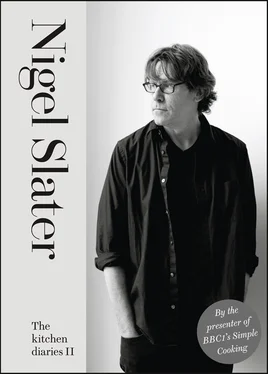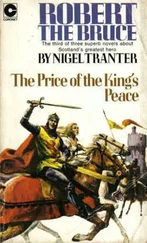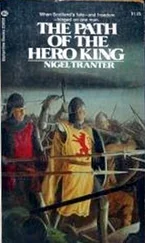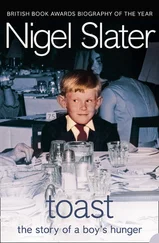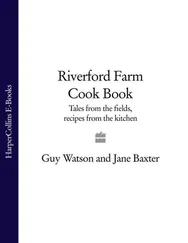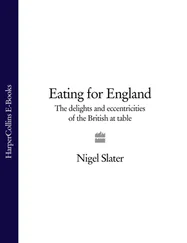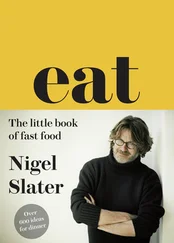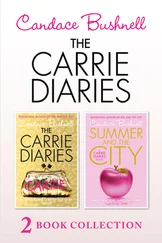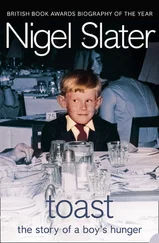1 ...7 8 9 11 12 13 ...23 Brush the pastry all over with the beaten egg wash and scatter a handful of grated Parmesan over the surface. Bake for thirty-five minutes or till golden.
Enough for 6

Poached apples with ginger and anise
Warm apples in a gently spiced syrup are useful as both a breakfast dish and a dessert. Sweet but refreshing, and pleasingly simple, these poached fruits are also good served thoroughly chilled. A nice change from creamy desserts. Odd as it seems, we ate this outside in the snow. The ginger-scented warmth and clarity of the juice encouraged us to eat it standing up in the garden, marvelling at the tall hedges weighed down with snow and the slowly darkening sky.
small to medium dessert apples: 3
the juice of half a lemon
unfiltered apple juice: 400ml
golden caster sugar: 2 tablespoons
star anise: 2
ginger preserved in syrup: 40g
syrup from the ginger jar: 4 tablespoons
Peel the apples, halve them and remove their cores. Toss gently in the lemon juice. Pour the apple juice into a pan large enough to accommodate the apples, then add the caster sugar, star anise, the ginger, sliced into coins, and the ginger syrup. Bring to the boil, then lower the heat so the liquid simmers gently.
Lower the fruit into the simmering syrup and leave, partially covered with a lid, until they are tender. They are ready when a skewer will glide effortlessly through their flesh – fifteen to twenty minutes or so.
Lift the fruit from the syrup with a draining spoon and place on a serving dish or in smaller individual dishes. Turn up the heat and bring the syrup to the boil. Serve warm, three halves of fruit per person, in little dishes or glasses with some of the apple- and spice-scented syrup spooned over.
Enough for 3
JANUARY 20
A golden fruit
A need for something sweet so I walk along London’s Edgware Road, with its Lebanese grocer’s and pastry shops. On a winter’s afternoon, this road north of Marble Arch is where I go to stock up on what we used to call sweetmeats – the tiny, sugary fruits and pastries that mark the end of a meal. Though I should add that they come out with coffee too, mid morning.
Today there are boxes of darkly sticky dates, powdery lokum, the Turkish delight whose chewy translucency comes scented with rose, pistachio and lemon, and crates of fat, gritty figs. Any of these will signify the full stop at the end of dinner as effectively as a slice of pie (though I would rather have the latter, if I’m honest). There are crimson pomegranates too, lemons on the twig, and tangerines sold with their leaves. There are pale and milky walnuts in their shells, sugared almonds and sultanas the colour of Sauternes.
Today I come back with a small box of honey-soaked pistachio pastries, a bag of fudge-textured dates, some thick, snow-white Lebanese yoghurt and a polystyrene tray of lamb chops the size of a baby’s fist. They will be grilled and dipped into hummus. Almost absentmindedly, I also pick up a handful of golden, pear-shaped quinces.
Despite its delicate fragrance, the quince is a harsh taskmaster. You need a strong wrist and a good knife to get through its hard flesh, and patience to see it cook through to tenderness. Your efforts will be rewarded though. Cooked slowly, this rock-hard fruit will be transformed into one of glowing colour and gently honeyed flavour. If you leave one to simmer with sugar and water, it will eventually turn a deep, translucent crimson.
Just two quinces in an apple pie are enough to imbue the entire filling with their scent and flavour. The quince’s flesh is considerably drier and more grainy than the apple, and needs additional moisture and time in which to cook. I put them on first, adding the apples only once the quince is showing signs of softness. In Tender, I used them in a pickle, a crumble and to sweeten a dish of slow-cooked lamb, but I spent today working them into a pie. Instead of a pastry crust, I have enclosed them in a loose form of crumble, so that the amber fruit shows through.
This tart needs a good hour or more of our time, but is really rather good. Serve it with a jug of cream or a scoop of crème fraîche.
a lemon
quinces: 500g
caster sugar: 2 tablespoons
maple syrup: 3 tablespoons
sweet apples: 750g
For the top:
plain flour: 150g
butter: 75g
demerara sugar: 75g
an egg, lightly beaten
For the crust:
butter: 100g, at room temperature
caster sugar: 80g
an egg, lightly beaten
plain flour: 200g
Make the pastry crust: dice the butter and put into a food mixer or processor with the sugar. Cream till light and fluffy, then add the egg and mix thoroughly. Spoon in the flour, bring the dough into a ball – it will be quite soft – then place on a generously floured work surface or board. Knead briefly; this will make it easier to work. Roll out the dough to fit a 22cm tart tin with a removable base, pushing it carefully into the corners and up the sides, patching any tears as you go. Refrigerate for twenty minutes.
Put a baking sheet in the oven and set it at 200°C/Gas 6. To make the filling, squeeze the lemon into a mixing bowl. Peel and core the quinces, then chop them into small pieces, tossing them in the lemon juice as you go to stop them browning. Place them in a deep saucepan, add the sugar and maple syrup, cover with a lid and leave over a low heat for fifteen minutes, until tender enough for you to insert a metal skewer into them easily. Check regularly and lower the heat if necessary, particularly towards the end of cooking when the syrup has reduced.
Meanwhile, core and dice the apples – there is no need to peel them. Stir them into the quinces as soon as the quinces are almost tender. Continue cooking, covered, for five to ten minutes or until the apples are just soft. Set aside.
Make the topping: put the flour and butter into a food processor and blitz till they resemble fine breadcrumbs. Alternatively, rub the butter into the flour with your fingers. Add the sugar and the egg and mix briefly to a moist, crumbly texture.
Fill the uncooked tart case with the apple and quince mixture, setting aside any juice, then scatter the crumble topping over. Some of the fruit will show through. Lift on to the hot baking sheet and bake for thirty minutes, till the crust and pastry are crisp and golden. Allow to settle a little before serving with a trickle of the reserved juices and some cream or crème fraîche.
Enough for 6–8
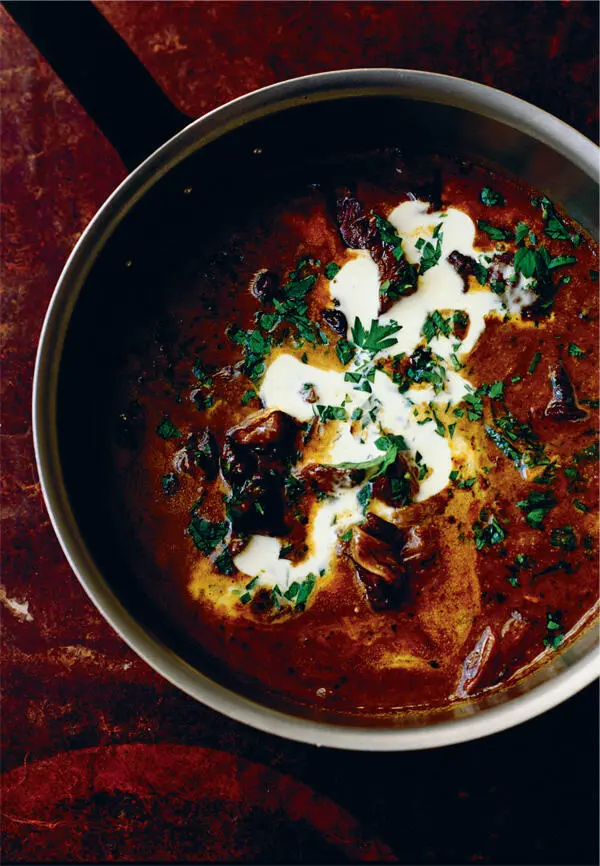
JANUARY 21
Browning meat. More quinces
Putting a piece of meat into a shallow layer of sizzling-hot fat, butter, duck fat, dripping or oil will do wonders for its flavour. Whilst it won’t actually ‘seal in’ the juices, as is often suggested, getting the cut surfaces of the meat to brown will enrich both the flavour of the meat and, rather importantly, the juices in the pan. It is worth doing. But here’s the rub. The meat must be given time to brown properly, and that means we need to leave it alone. I have lost count of the number of times I have seen meat, particularly beef, moved constantly round with a spoon or spatula. Hard as it is not to tinker, we must leave it alone long enough for the cut surfaces to colour appetisingly, otherwise the action is pointless.
Читать дальше
